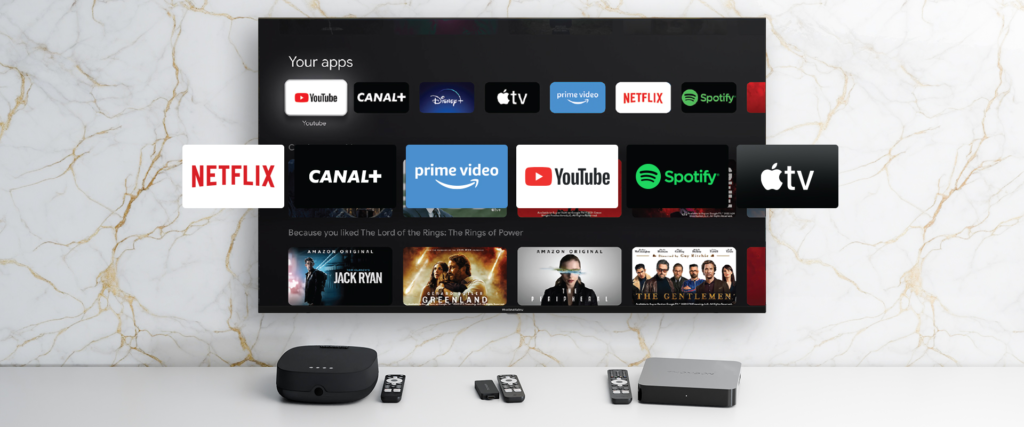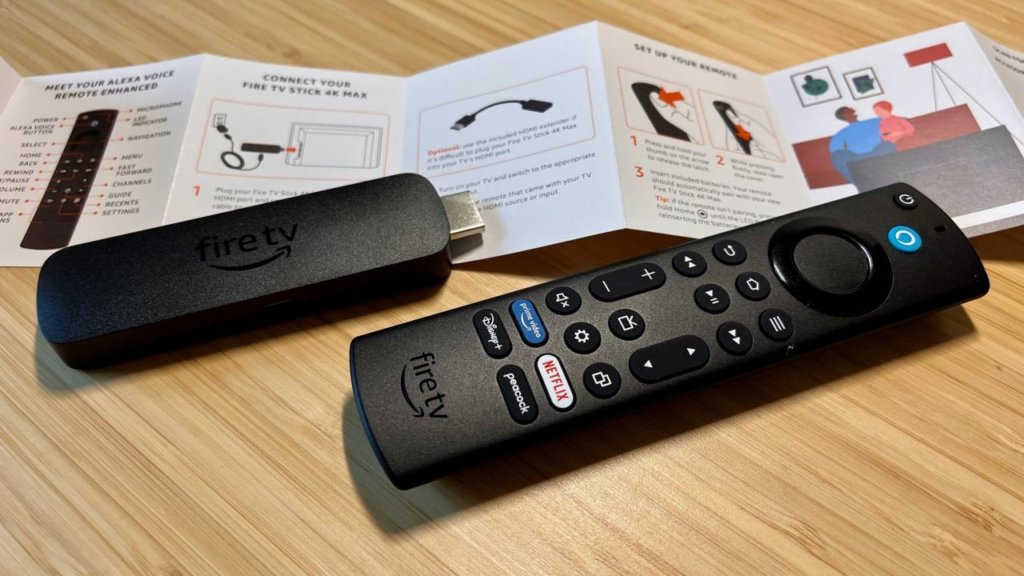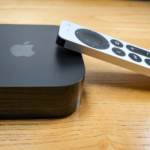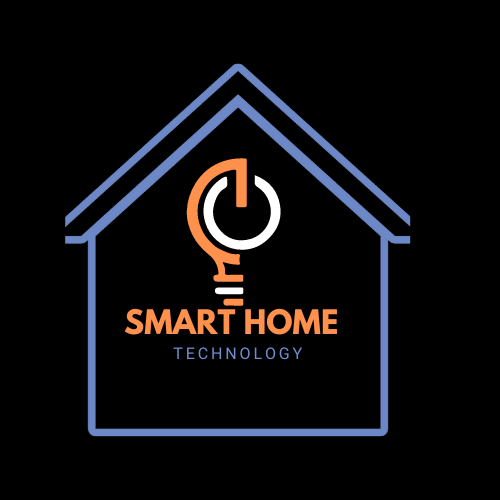
Photo credit: Thomson
Streaming devices allow your TV or monitor to receive internet-based content. With these devices, users may stream music, films, and other digital content straight from various streaming services and platforms, including YouTube, Netflix, Hulu, and Amazon Prime Video, without a conventional cable or satellite connection.
Table of Contents
Introduction
New to the world of televised comfort and happen to be recommended to streaming devices, you have been away from present-day tech, and you want to belong to the real world now; anyway, you are welcome. Streaming devices are compact hardware tools designed to connect your TV or monitor to the internet, enabling access to televised online content. Streaming devices use an internet connection to pull digital content from online platforms. Basically.
What Are Streaming Devices?
In the era of on-demand entertainment, streaming devices have revolutionized media consumption due to the seriousness of life and living in America. These devices allow users to access digital content directly on their television or other screen mediums, such as movies, TV shows, music, and even games. But what exactly are streaming devices, how do they operate, and what benefits can they offer? This article answers these questions to help you understand these necessary gadgets.
What Are Streaming Devices?
Streaming devices are small hardware gadgets that allow you to view online material by connecting your TV or monitor to the Internet. These gadgets link conventional television sets and digital streaming services, including YouTube, Spotify, Netflix, Hulu, and Disney+.
Streaming devices transform your television into a “smart TV” beyond the basic smart TV. It can browse and stream content without needing a cable subscription or satellite dish and almost without any limitation.
How Do Streaming Devices Work?
Streaming devices use an internet connection to pull digital content from online platforms. Here’s how the process works:
- Connection to TV: Streaming devices are plugged into your TV via an HDMI port.
- Internet Access: They connect to the internet through Wi-Fi or an Ethernet cable.
- Platform Integration: Once connected, you can access various apps and services pre-installed or downloaded onto the device.
- Content Streaming: When you select content, the device fetches it from the internet and streams it in real-time to your screen.
Types of Streaming Devices
There are various types of streaming devices available today, each catering to different needs and preferences of other users:
1. Streaming Sticks
- Examples: Amazon Fire Stick, Roku Streaming Stick, Google Chromecast
- These compact, plug-and-play devices connect directly to your TV’s HDMI port. They are portable and ideal for travelers.
2. Set-Top Boxes
- Examples: Apple TV, Nvidia Shield, Roku Ultra
- These devices are more significant than streaming sticks but often offer more powerful processors, enhanced features, and additional ports.
3. Gaming Consoles
- Examples: PlayStation, Xbox
- Gaming consoles double as streaming devices, allowing users to access platforms like Netflix and Hulu alongside gaming.
4. Smart TVs
- While not standalone devices, many modern Smart TVs come with built-in streaming capabilities, eliminating the need for external hardware.
Popular Features of Streaming Devices
Modern streaming devices are developed with unique features designed to enhance the viewing experience:
- 4K and HDR Support: High-resolution streaming for crystal-clear picture quality.
- Voice Control: Integration with virtual assistants like Alexa, Siri, or Google Assistant.
- Customizable Apps: Access to a variety of streaming platforms and apps.
- Cross-Platform Search: Search functionality that aggregates content from multiple apps.
- Gaming Options: Some devices also support casual gaming or access to cloud gaming services.
Benefits of Using Streaming Devices
- Cost Efficiency: Save money by cutting cable subscriptions and opting for affordable streaming services.
- Flexibility: Watch content on-demand without being tied to TV schedules.
- Portability: Streaming sticks and portable devices make it easy to carry your entertainment wherever you go.
- Diverse Content: Access thousands of movies, shows, music, and live broadcasts from around the world.
- Ease of Use: Intuitive interfaces and easy setup make them accessible to people of all ages.
Things to Consider When Choosing a Streaming Device

photo credit: Yahoo
Before purchasing any streaming device, consider the following:
- Compatibility: Ensure the device works perfectly with your TV and preferred streaming services.
- Internet Speed Requirements: High-quality streaming requires a stable and fast internet connection. Contact your ISP and opt for offers that suit your needs.
- Features: Based on your needs, choose a device with features like 4K support, voice control, or gaming options.
- Budget: Streaming devices vary in price, so pick one that fits your budget without compromising bare essentials. Read more on how to select the streaming device that best suits me.
Types of Streaming Devices
There are various types of streaming devices, each catering to different needs and preferences:
| Type | Examples | Description |
| Streaming Sticks | Amazon Fire Stick, Roku Streaming Stick, Google Chromecast | Compact, portable devices that plug directly into the HDMI port of your TV. |
| Set-Top Boxes | Apple TV, Nvidia Shield, Roku Ultra | Larger devices with more advanced features, ports, and processing power. |
| Gaming Consoles | PlayStation, Xbox | Dual-purpose devices for gaming and streaming. |
| Smart TVs | Samsung Smart TV, LG Smart TV | TVs with built-in streaming functionality, eliminating the need for extra hardware. |
Key Features of Streaming Devices
Modern streaming devices come with several standout features:
- 4K and HDR Support: Offers high-quality streaming for sharper visuals.
- Voice Control: Integrated with virtual assistants like Alexa or Google Assistant.
- Cross-Platform Search: Aggregates search results from multiple apps.
- Gaming and Extras: Supports casual gaming and offers additional media functionalities.
FAQ’s
What is streaming, for example?
The real-time transmission of audio and video information over the Internet is known as streaming, and it enables users to watch and listen to media without fully downloading it. For example, you stream material straight from the service’s servers to your device when you view a movie on Netflix or listen to a song on Spotify.
What is the fastest streaming device?
When it comes to streaming gadgets, the Amazon Fire TV Cube is one of the fastest. Its octa-core CPU improves speed and performance.
What is streaming used for?
Streaming is used for accessing various forms of media content in real-time, including:
· Video Content: Movies, TV shows, live broadcasts.
· Music: Songs, albums, playlists.
· Live Events: Sports, concerts, webinars.
· Gaming: Playing video games via cloud gaming services.
What is an example of a streaming media player?
An example of a streaming media player is the Roku Ultra, which allows users to stream content from various online platforms directly to their TVs.
What do streaming devices do?
Streaming devices allow you to view digital material from various streaming providers by connecting your TV or monitor to the internet. They let you play games, view TV series and films, and listen to music without using cable or traditional broadcast services.
Is Netflix an example of streaming?
Indeed, Netflix is one of the best examples of a streaming service. It provides a sizable collection of films, TV series, and documentaries that viewers may access online whenever they want.
What is the best streaming platform?
The “best” streaming platform can vary based on individual preferences, content selection, and user experience. As of recent data, Netflix remains the most popular streaming service, boasting approximately 269.6 million subscribers.
Who owns Netflix?
Netflix is a publicly traded company, meaning its shareholders own its stock. It was co-founded by Reed Hastings and Marc Randolph in 1997. As of 2024, Reed Hastings serves as the co-CEO alongside Ted Sarandos.
How many streaming platforms are there?
Streaming platforms have grown significantly, with over 200 services available across various regions as of 2024.
Conclusion
Streaming devices have become a cornerstone of modern entertainment, and you need a stake in this as they offer an affordable and convenient way to access digital content. With a wide range of options available, there’s a device to suit your every need, whether you’re a casual viewer or a tech-savvy enthusiast. As streaming technology continues to evolve, these devices are set to become even more integral to our digital lifestyles.
Explore the options and transform your viewing experience today!
Share Your Thoughts
Streaming devices have changed the entertainment landscape, offering flexibility and freedom. Do you think they’re a complete cable replacement or just a supplement? Share your opinions—how have they impacted your viewing habits?


